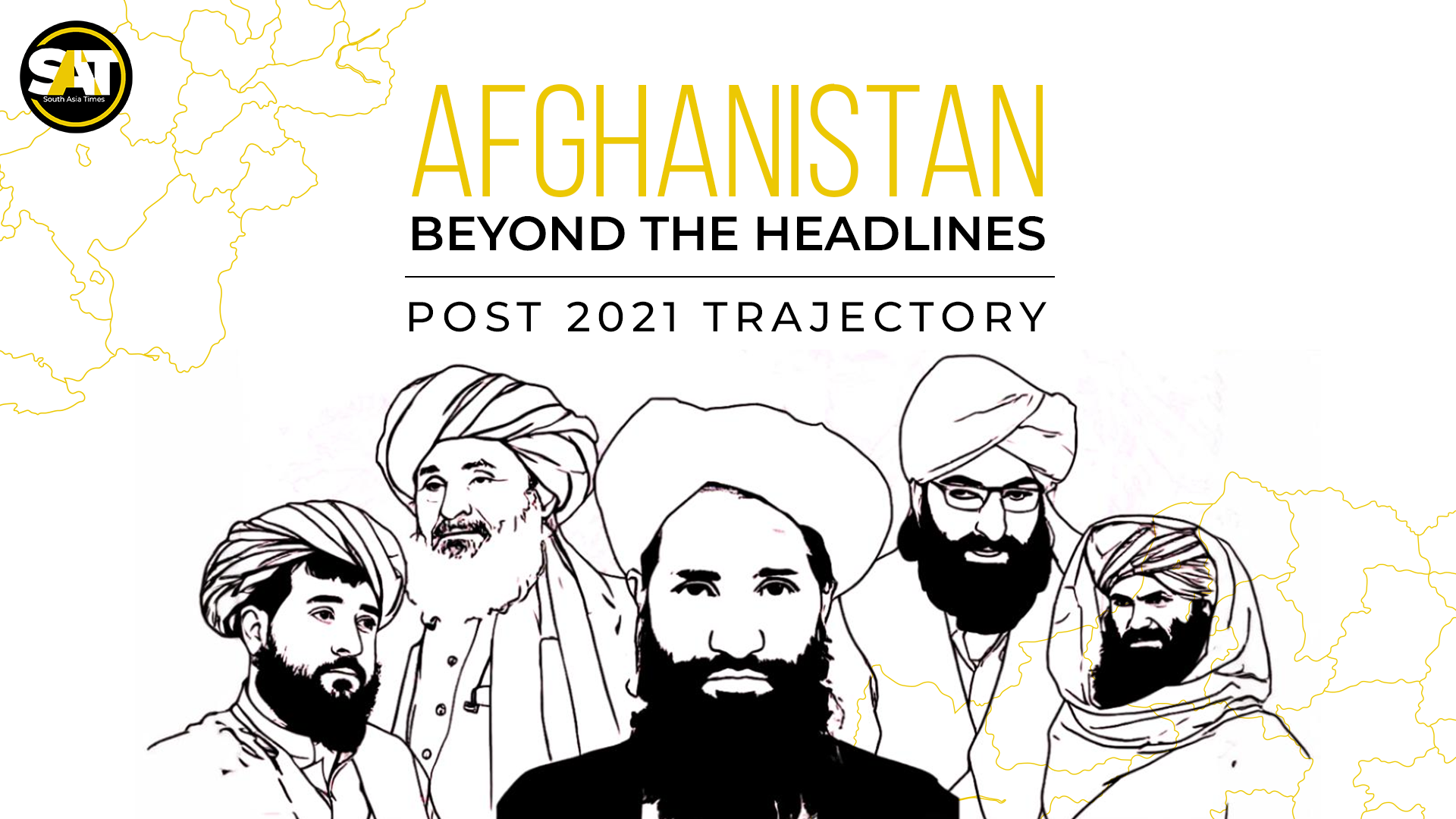Yesterday, on November 5, 2024, the United States citizens cast their votes for the next president in the 2024 US elections marked by significant uncertainty rather than high anticipation. Democratic Vice President Kamala Harris and Republican former President Donald Trump have been tightly contesting for weeks, with Trump recently taking the lead following a critical win in Pennsylvania.
As of November 6, 2024, more than 84 million Americans have voted so far in the US Elections 2024, setting a high mark for early turnout. Election Day itself went smoothly overall, though isolated issues, such as long lines, technical glitches, and ballot printing errors, were reported, as is typical in high-turnout elections.
A Transitioning World Order
The US Elections 2024 arrive during a period of global transition.
The unipolar moment following the Cold War, where the U.S. held unmatched influence, has gradually given way to a multipolar landscape where China, Russia, and other powers assert themselves.
Historical analogs, such as the rise of competing superpowers during the interwar period and the polarization observed during the Cold War, highlight the cyclical nature of international influence. South-South cooperation, bolstered by initiatives like China’s Belt and Road and the BRICS alliance, embodies this shift. Moreover, how effectively the U.S. can address ongoing conflicts in the Middle East—especially given its perceived bias in favor of Israel during the Gaza war and strong support for Prime Minister Netanyahu—will play a crucial role in determining whether it retains its global influence or risks being sidelined in a multipolar world, especially after the US Elections 2024 shape future policy.
Also See: Trump 2.0: Factors Fueling the Momentum for a Second Term
What Would a Trump Victory Mean for the Middle East?
A Trump presidency after the US Elections 2024 is expected to be aggressive and unpredictable in the Middle East. Trump’s previous term saw an emphasis on “maximum pressure” strategies, particularly toward Iran, which he may replicate in this new term.
- Iran and the JCPOA
Trump’s withdrawal from the 2015 Iran nuclear deal (JCPOA) in 2018 marked a hardline stance, applying extensive economic and political sanctions on Iran. Now, with his renewed mandate, Trump is unlikely to rejoin the JCPOA, signaling a continuation of his previous policies toward isolating Iran and pressuring it economically. - Shared Regional Objectives
Trump’s administration is expected to pursue similar overarching goals in the Middle East as previous administrations, such as promoting a ceasefire in Gaza, reducing tensions along the Israel-Lebanon border, and countering Houthi attacks in the Red Sea. However, Trump’s methods may involve a more robust military stance and stronger support for Israel, as evidenced in his prior dealings with the region. - Countering China and Engaging Allies
To counterbalance China’s growing influence, Trump may prioritize strong support for Israel and a confrontational stance toward Iran, potentially straining U.S. relations with other key regional players like Türkiye, the UAE, and Qatar.
What Does Trump’s Victory Mean for South Asia?
In South Asia, the implications of the election outcome extend to Afghanistan, India, and Pakistan in particular.
1. Afghanistan’s Strategic Landscape
In Afghanistan, there’s a noticeable inclination toward a Trump-led White House. During Trump’s previous term, the U.S. negotiated a withdrawal deal that aligned with the Taliban’s interests. Therefore, a renewed Trump presidency might mean less focus on internal issues like human rights, especially women’s education, and more on potential development aid. This approach may appeal to the Taliban, who appear less interested in scrutiny over their governance.
Notably, the Doha Agreement conditioned U.S. withdrawal on the Afghan Taliban’s commitment to preventing terrorist organizations, such as ISIS and al-Qaeda, from operating within Afghan territory. However, as of 2024, groups like the Tehrik-i-Taliban Pakistan (TTP) and ISIS-Khorasan Province (ISKP) continue to operate within Afghanistan, under the Afghan Taliban government.
With Trump back in office, his administration would likely refine this approach, focusing on strategic interests like counterterrorism, while potentially sidelining concerns over internal governance in favor of stability and security in the region.
The challenge, however, is that the Afghan Taliban’s failure to meet the terms of the Doha Agreement, especially in regard to containing terrorist groups, could complicate U.S. relations with Afghanistan and the broader region.
2. The Indian Context
India’s relationship with the United States has deepened considerably over the past decades, marked by bipartisan support. However, a Trump presidency could transform this relationship into a more transactional one, particularly concerning trade and technology partnerships. Trump’s prior comments branding India as a “tariff king” suggest a return to protectionist policies, which could lead to elevated tariffs on over $75 billion worth of Indian exports, impacting core sectors such as IT, pharmaceuticals, and textiles.
Furthermore, the current diplomatic rift between India and Canada due to allegations of Indian state involvement in extrajudicial actions might compel U.S. involvement as a mediator. A Trump administration’s inclination might lean towards supporting a strong ally like India, potentially sidelining concerns over human rights issues in this heightened geopolitical competition.
3. Implications for Pakistan
The return of Donald Trump to the presidency presents a mixed bag for Pakistan, where some factions, particularly those loyal to former Prime Minister Imran Khan, view him favorably. They believe that Trump’s presidency could lead to diplomatic pressure for Khan’s release and potentially develop a renewed U.S.-Pakistan rapport based on security interests.
However, Trump’s prioritization of U.S. security over humanitarian concerns could lead to reduced aid that is primarily tied to counterterrorism efforts against groups like the Tehrik-i-Taliban Pakistan (TTP). The TTP, operating from Afghanistan with increasing strength, poses a significant challenge to Pakistan, especially as its alliance with the Afghan Taliban solidifies.
Although Trump’s previous handling of the U.S.-Pakistan relations was characterized by a transactional approach, focusing on immediate gains, it may offer Pakistan some leverage.
In context of Doha Agreement, Trump’s likely focus on counterterrorism could prompt Pakistan to address challenges posed by the TTP more decisively.
However, his administration’s historical bias towards strengthening ties with India could strain Pakistan’s position, particularly regarding regional conflicts and its relationship with China—the latter being critical for economic stability through initiatives like the China-Pakistan Economic Corridor (CPEC).
Therefore, Pakistan will need to adapt its diplomatic strategies to maintain its relevance in U.S. policy while safeguarding its national interests against the backdrop of a shifting global landscape.
Ultimately, the U.S. elections will shape Pakistan’s foreign relations landscape, compelling Islamabad to navigate complex ties with both Washington and Beijing while managing its internal security challenges, particularly those posed by the TTP and its relationship with the Afghan Taliban.
4. Bangladesh’s Position
Bangladesh, currently under the leadership of Nobel laureate Muhammad Yunus, may lean more toward partnerships that emphasize humanitarian aid and development, which might have found greater support under a Harris administration. Trump’s primary focus on strategic concerns may create less engagement with Bangladesh’s leadership, which is increasingly oriented toward Chinese alliances.
In summary, the electoral outcome in the U.S. is poised to dynamically reshape the political landscape in South Asia, with each country dealing with the implications of strategic shifts while balancing relationships with global powers. The choices made by the next U.S. administration will not only affect bilateral ties but also have significant repercussions for broader regional stability and international relations.
Implications for the U.S. and the World
As the United States braces for the policy shifts expected under a Trump administration, questions about the trajectory of its foreign policy in a complex global landscape remain. Trump’s approach will likely emphasize a reassertion of American strength through direct engagement and prioritization of national interests, potentially heightening tensions with competing global powers. Adopting a flexible, multilateral approach in foreign policy will be crucial for ensuring that U.S. actions align with global aspirations rather than imposing rigid ideologies. As emerging powers continue to shape global affairs, the U.S.’s choices in the coming months will have lasting impacts on regions like South Asia and the future trajectory of the international order itself, especially amid the rise of regional alliances that signal the end of a unipolar world.

![US Elections 2024: With Trump’s return to the White House, the world watches closely to see what’s next for America. [Image via Getty Images]](https://southasiatimes.org/wp-content/uploads/2024/11/FP-Editorial-Trump-2181226681-Harris-2181817988.webp)




